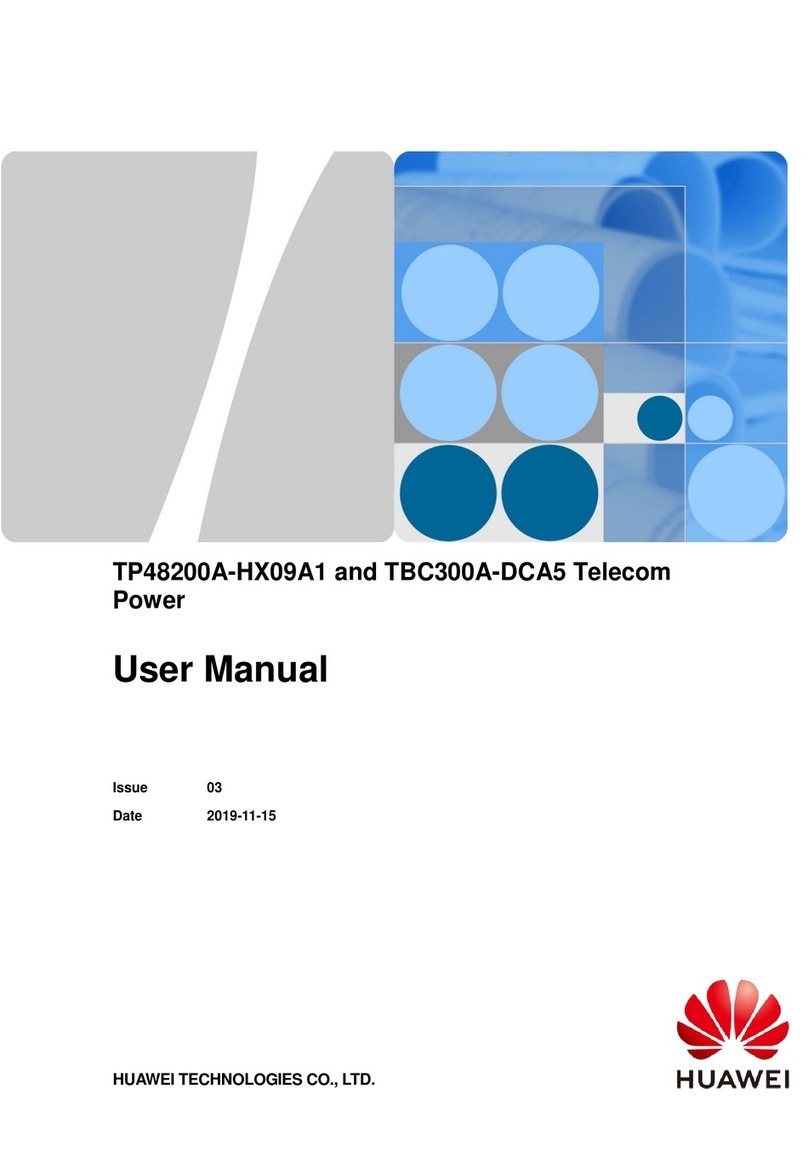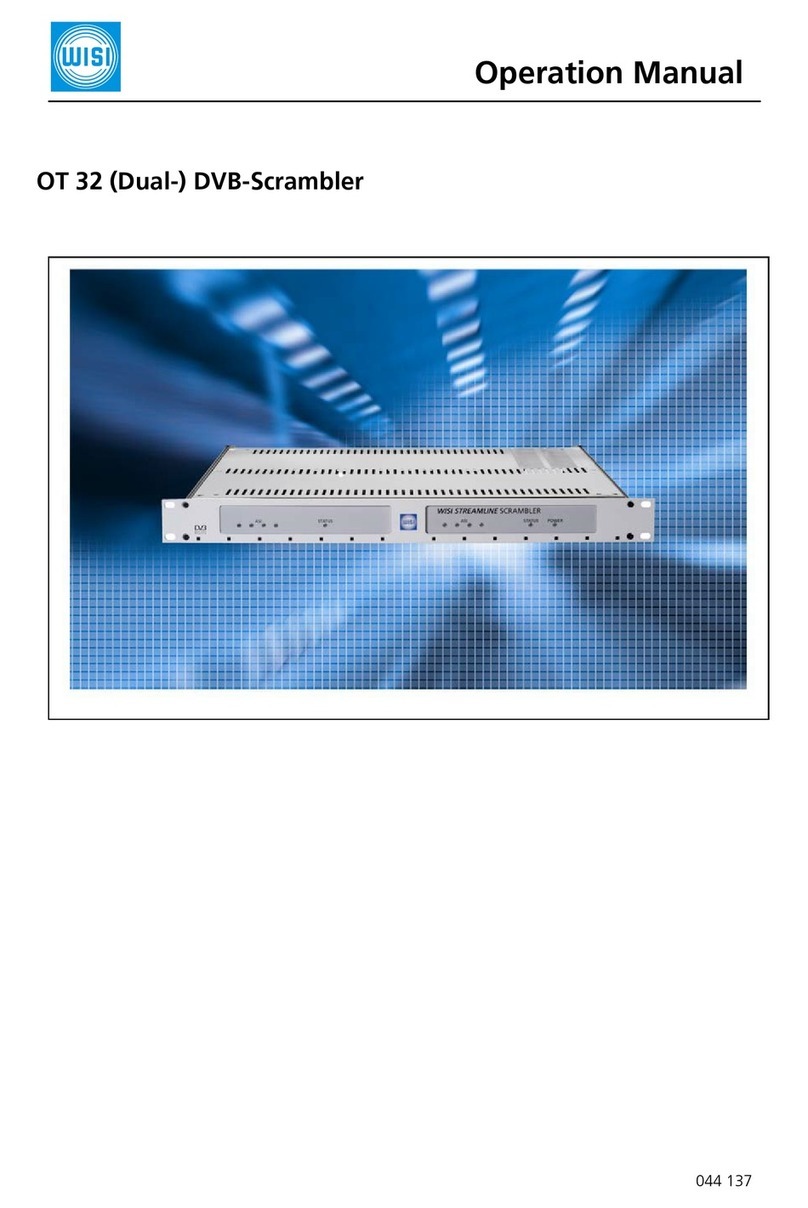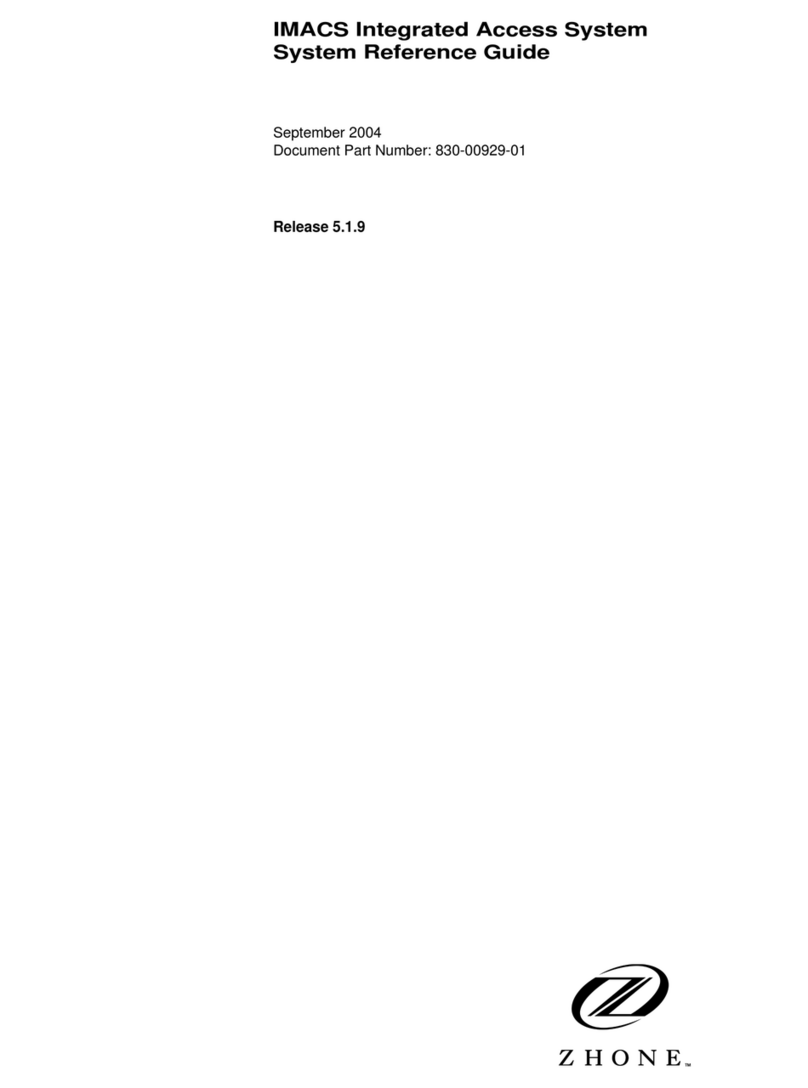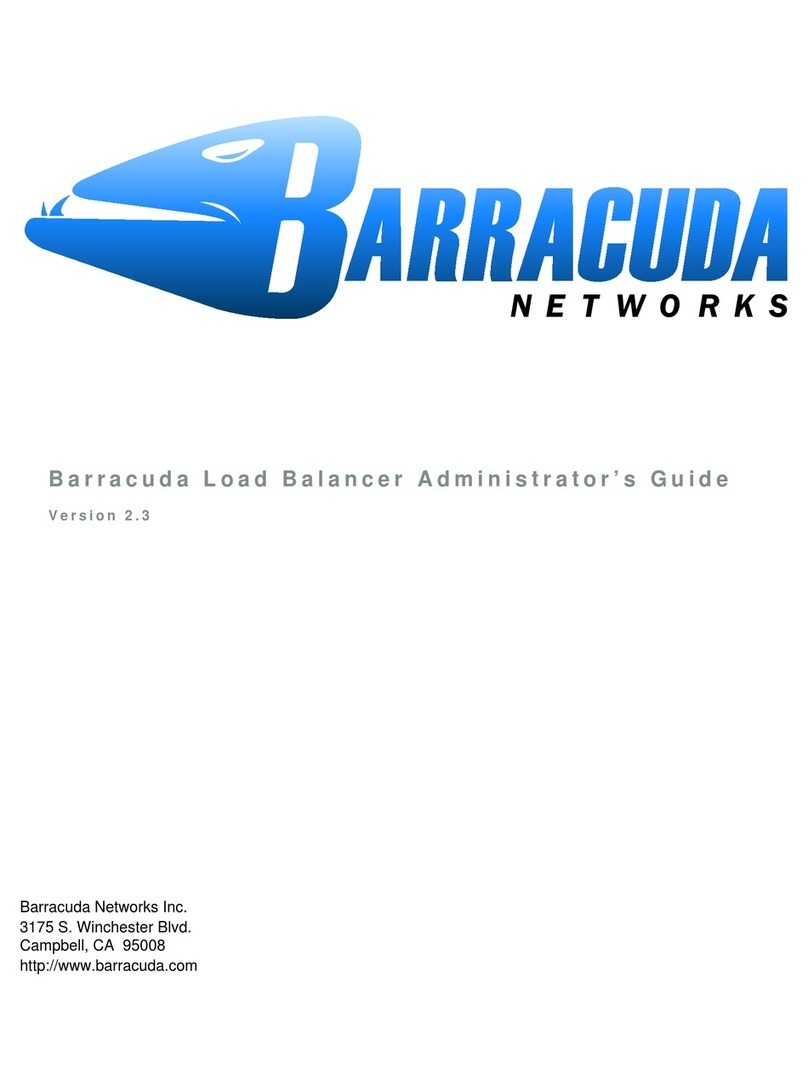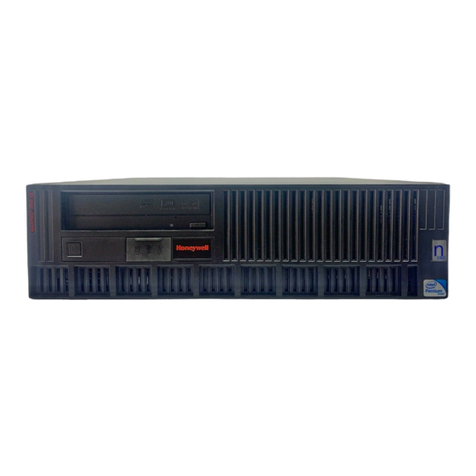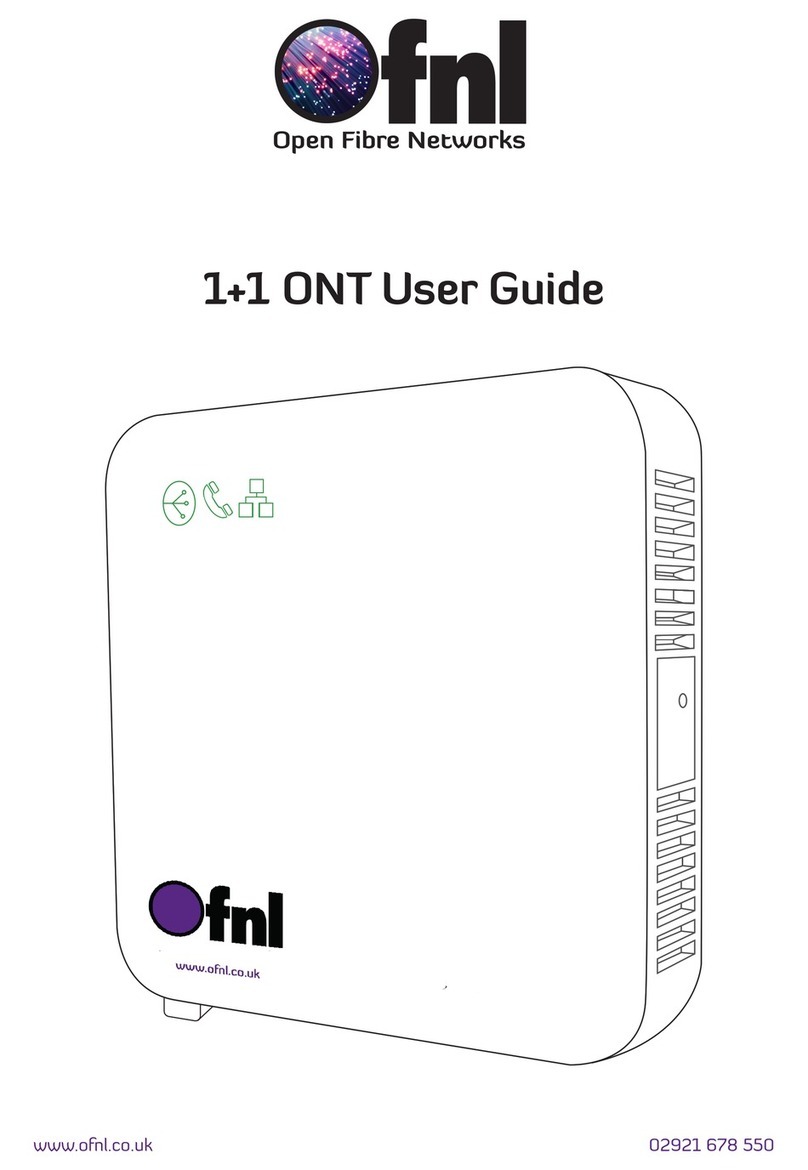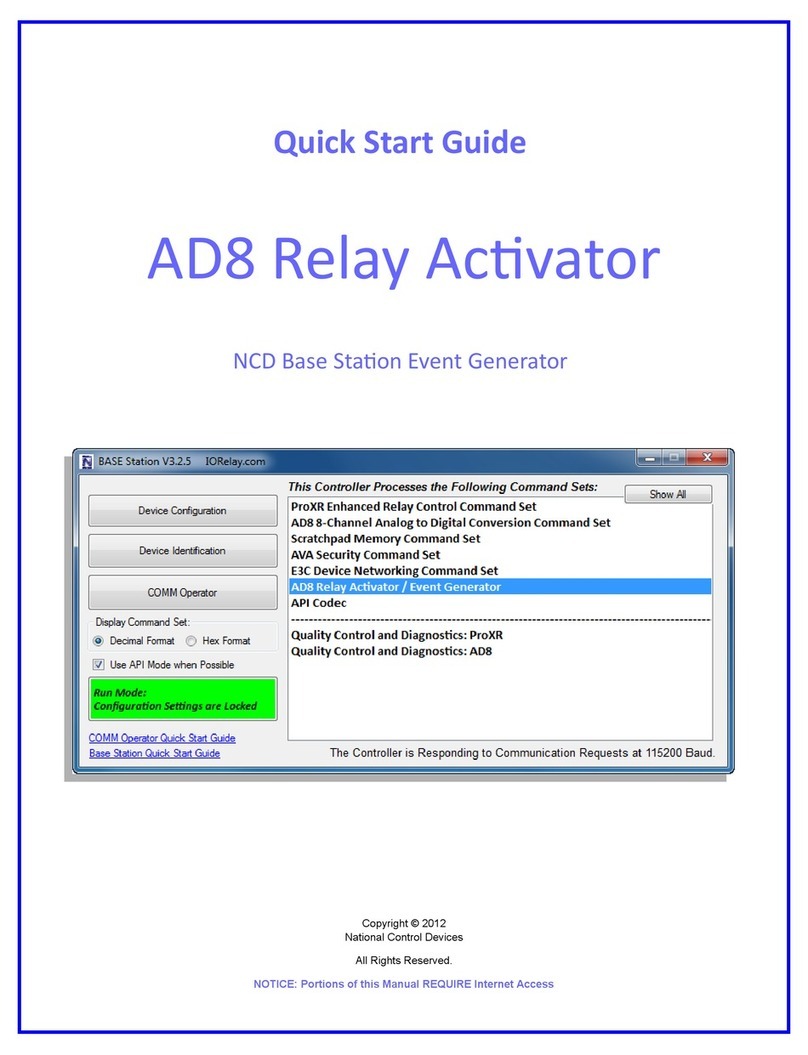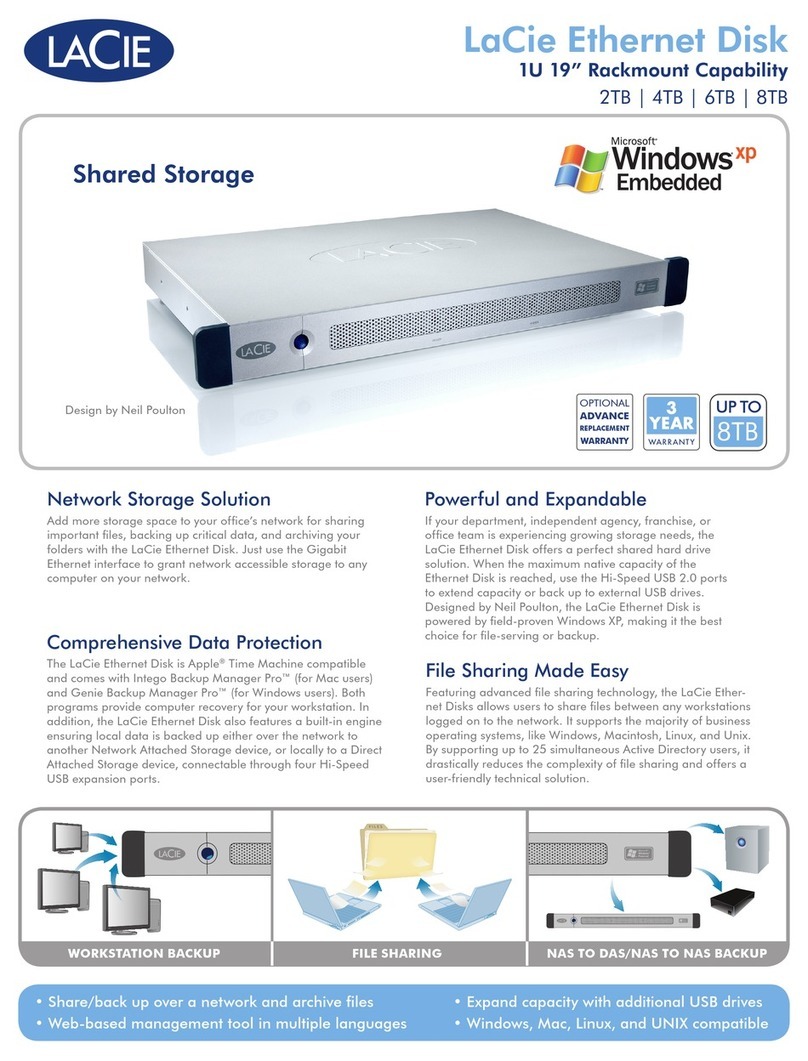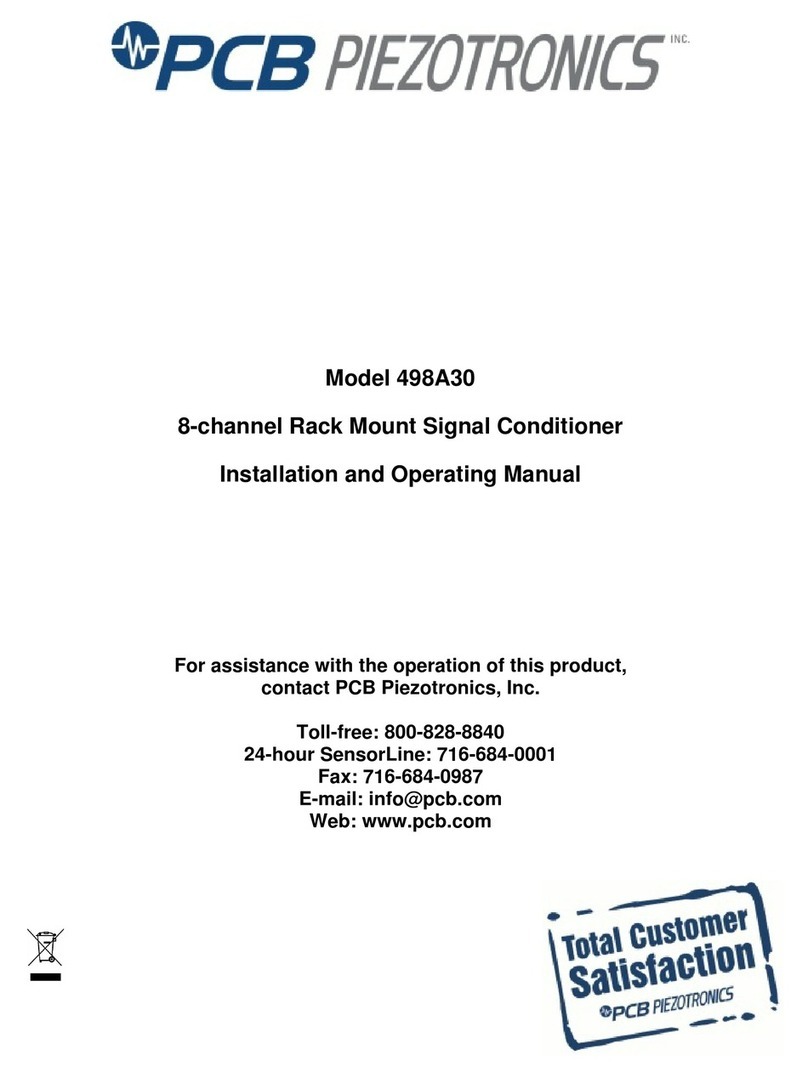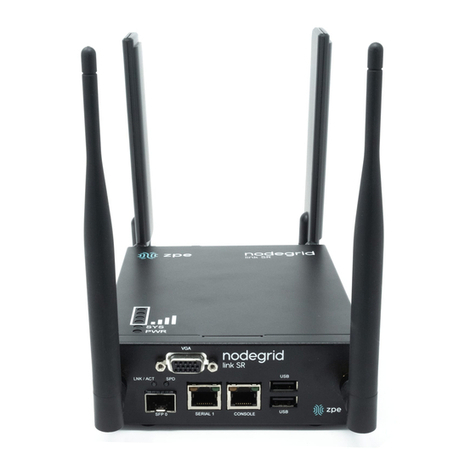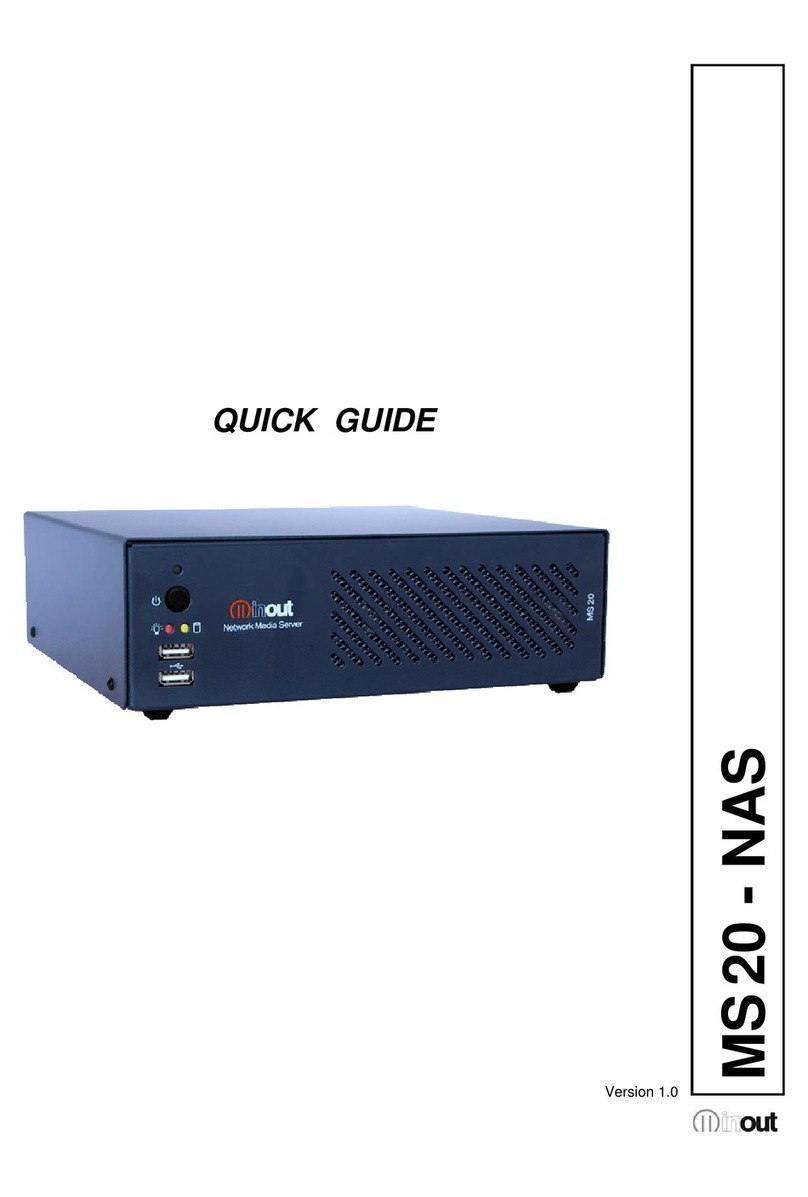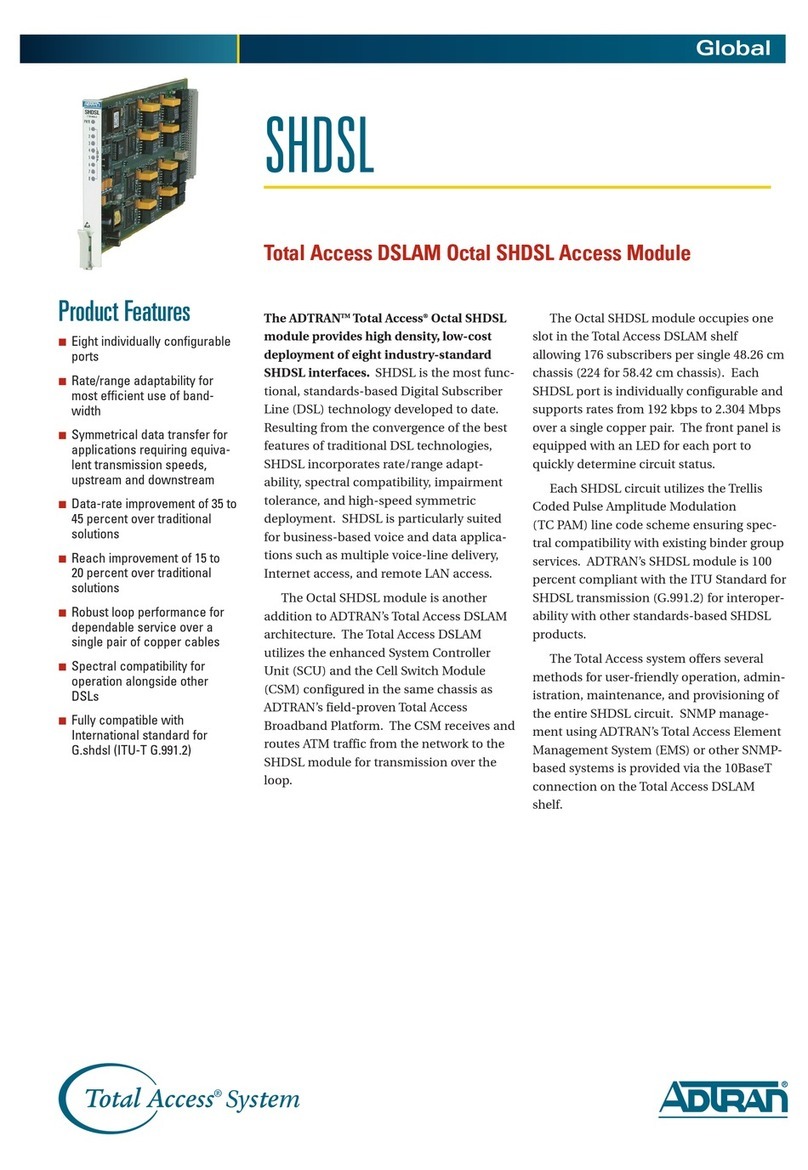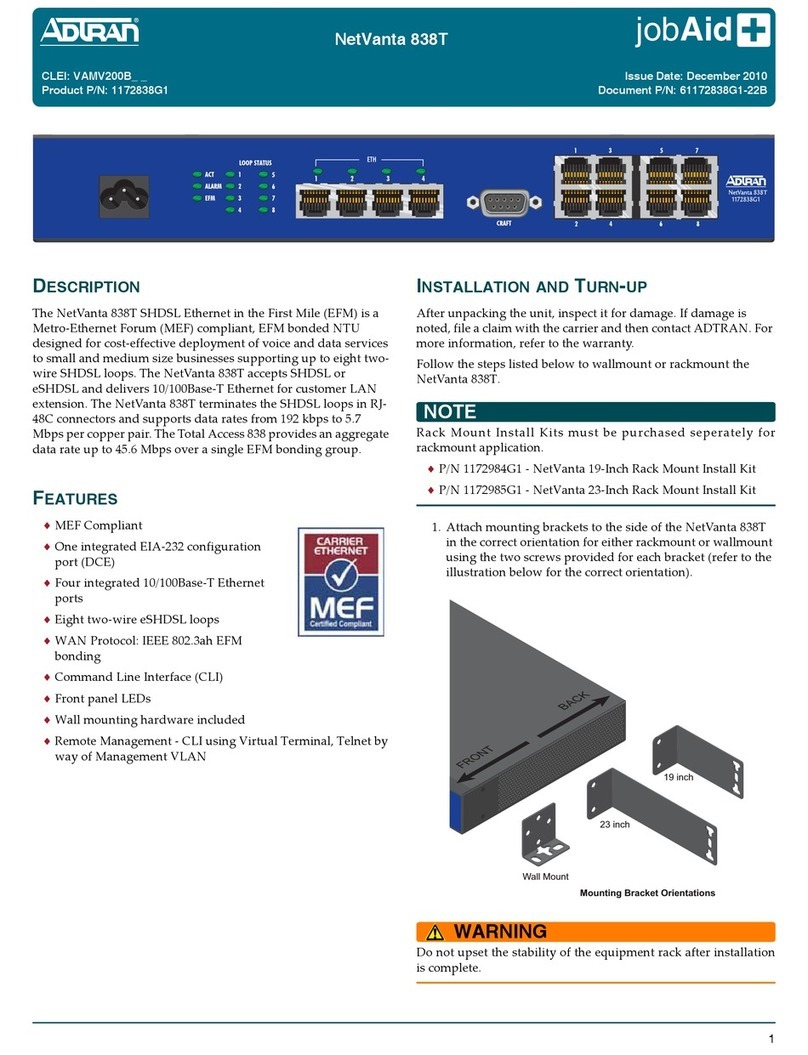EMTEST N Series User manual

.
Operating-
manual
CNV 504N1 CNV 504N2
N-Series
Coupling network for
surge to signal and datalines
CNV 504N1.1, N1.2 , N1.3 , N1.6
CNV 508N1, N1.1, N1.2 N1.3
CNV 508N2, N2.2 N2.3 N3.3
The coupling network of the series CNV 504 / 508 are designed
for coupling surge- or telecom pulses to signal or data lines.
The coupling network expands the range of application of the
impulse generator UCS500, VCS500 and CSS500 for testing
signal and data lines.
Main characteristics are the advantages for handling and the
easy using with banana plugs.
EN/IEC 61000-4-5
EN 50121-3-2
EN 50155
Version:
1.20 / 01.06.2017
The benchmark for emc
Replaces:
1.19 / 29.03.2016
Filename:
UserManual-CNV504-508-N1-N2-E-V1.20
Print date:
01.06.17

EM TEST CNV 504N1/N2 / 508N1/N2
Operating manual V 1.20 2 / 23
EM TEST (Switzerland) GmbH
Sternenhofstrasse 15
4153 Reinach BL1
Switzerland
Phone : +41 61 717 91 91
Fax : +41 61 717 91 99
URL : http://www.emtest.com
Copyright © 2017 EM TEST (Switzerland) GmbH
All right reserved.
Information in earlier versions. Specifications subject to change

EM TEST CNV 504N1/N2 / 508N1/N2
Operating manual V 1.20 3 / 23
Content
1. Standards for testing with coupling networks of CNV 504 / CNV 50x series.............4
1.1. Device models....................................................................................................................................4
1.2. Impulse generators.............................................................................................................................6
2. Safety................................................................................................................................7
2.1. Safety aspects....................................................................................................................................7
2.2. Testing and danger.............................................................................................................................8
2.2.1. Coupling networks..............................................................................................................................8
2.2.2. Danger from EUT ...............................................................................................................................8
3. Device functions and operating.....................................................................................9
3.1. Operation elements on the CNV 504 / CNV 508 series.....................................................................9
3.2. General ...............................................................................................................................................9
3.3. Input / output to CNV 504 / 50x............................................................................................................9
3.4. Coupling............................................................................................................................................10
3.4.1. Coupling to signal and data lines .....................................................................................................10
3.4.2. Coupling to Telecom Lines...............................................................................................................10
3.5. Test setup.........................................................................................................................................11
4. Technical data ...............................................................................................................13
4.1. CNV 504N1 / CNV 508N1 ................................................................................................................13
4.2. CNV 504N1.2, CNV504N1.3..........................................................................................................13
4.3. CNV 504N1.6....................................................................................................................................14
4.4. CNV 504N2 / CNV 508N2 ................................................................................................................14
4.5. CNV 508N1.2 / CNV 508N2.3..........................................................................................................15
5. Maintenance...................................................................................................................16
5.1. General.............................................................................................................................................16
5.2. Calibration and Verification...............................................................................................................16
5.2.1. Factory calibration ............................................................................................................................16
5.2.2. Guideline to determine the calibration period of EM Test instrumentation ......................................16
5.2.3. Calibration of Accessories made by passive components only: ......................................................16
5.2.4. Periodically In-house verification......................................................................................................16
5.3. Maintenance, Adjustments, Replacement of Parts ..........................................................................17
6. Delivery Groups.............................................................................................................17
6.1. Basic equipment...............................................................................................................................17
6.2. Accessories ......................................................................................................................................17
7. Coupling devices...........................................................................................................18
7.1. Coupling network CNV 504N1, CNV 504N1.2, CNV 504N1.3, CNV 504N1.6 ................................18
7.1.1. Diagram CNV 504N1 / 508N1..........................................................................................................19
7.2. Coupling network CNV 504N2..........................................................................................................20
7.2.1. Diagram CNV 504N2 / 508N2..........................................................................................................20
8. Appendix........................................................................................................................21
8.1. Declaration of conformity..................................................................................................................21
8.2. Overvoltage protection on sensor input............................................................................................22
8.3. Transferfunktion in function with the EUT Impedance .....................................................................23

EM TEST CNV 504N1/N2 / 508N1/N2
Operating manual V 1.20 4 / 23
1.
Standards for testing with coupling networks of CNV 504 / CNV 50x series
The coupling network CNV504 / CNV50x series are suitable for testing the following standards:
- IEC 61000-4-5
Surge 1.2/50s , 10/700s
- EN 50121-3-2
Surge CNV 504N1
- IEC 61000-4-12
Ringwave
1.1.
Device models
Following coupling decoupling network for signal and data lines exist:
Standard devices:
CNV 504N1
4kV coupling/decoupling network for Surge and Ringwave onto 4 signal/data lines
with 40ohm via 0.5uF capacitor (as per Fig. 11, IEC 61000-4-5) and arrestor (as per Fig.12);
with 3.3uF capacitor for Ringwave (as per Fig. 9, IEC 61000-4-12);
Rated line voltage/current 50V/1A
CNV 504N1.1
4kV coupling/decoupling network for Surge and Ringwave onto 4 signal/data lines
with 40ohm via 0.5uF capacitor (as per Fig. 11, IEC 61000-4-5) and arrestor (as per Fig.12);
with 3.3uF capacitor for Ringwave (as per Fig. 9, IEC 61000-4-12);
Rated line voltage/current 50V/4A
CNV 504N1.2
4kV coupling/decoupling network for Surge and Ringwave onto 4 signal/data lines
with 40ohm via 0.5uF capacitor (as per Fig. 11, IEC 61000-4-5) (as per Fig.12);
with 3.3uF capacitor for Ringwave (as per Fig. 9, IEC 61000-4-12);
Rated line voltage/current 250V/1A
CNV 504N1.3
4kV coupling/decoupling network for Surge and Ringwave onto 4 signal/data lines
with 40ohm via 0.5uF capacitor (as per Fig. 11, IEC 61000-4-5) (as per Fig.12);
with 3.3uF capacitor for Ringwave (as per Fig. 9, IEC 61000-4-12);
Rated line voltage/current 250V/4A
CNV 504N1.4
4kV coupling network for 4 data/signal lines 50V,
via coupling capacitor and gas arrestor
(No decoupling included !!!)
CNV 504N1.5
4kV CDN for 4 data/signal lines 230V/1A,
via coupling capacitor and gas arrestor (600V)
CNV 504N1.6
4kV coupling/decoupling network for Surge and Ringwave with
40ohm via 0.5uF capacitor (asper fig.11, IEC 61000-4-5) and gas arrestor (as per Fig.12) ;
with 3.3uF capacitor for Ringwave (as per fig.9, IEC 61000-4-12);
Rated line voltage/current 250V/4A, max. 50V for tests with gas arrestor
CNV 508N1
4kV coupling/decoupling network for Surge and Ringwave onto 8 signal/data lines
with 40ohm via 0.5uF capacitor (as per Fig. 11, IEC 61000-4-5) and arrestor (as per Fig.12);
with 3.3uF capacitor for Ringwave (as per Fig. 9, IEC 61000-4-12);
Rated line voltage/current 50V/1A
CNV 508N1.1
4kV coupling/decoupling network for Surge and Ringwave onto 8 signal/data lines
with 40ohm via 0.5uF capacitor (as per Fig. 11, IEC 61000-4-5) and arrestor (as per Fig.12);
with 3.3uF capacitor for Ringwave (as per Fig. 9, IEC 61000-4-12);
Rated line voltage/current 50V/4A
CNV 508N1.2
4kV coupling/decoupling network for Surge and Ringwave onto 8 signal/data lines
with 40ohm via 0.5uF capacitor (as per Fig. 11, IEC 61000-4-5);
with 3.3uF capacitor for Ringwave (as per Fig. 9, IEC 61000-4-12);
Rated line voltage/current 250V/1A
CNV 508N1.3
4kVcoupling/decoupling network for Surge and Ringwave onto 8 signal/data lines
with 40ohm via 0.5uF capacitor (as per Fig. 11, IEC 61000-4-5);
with 3.3uF capacitor for Ringwave (as per Fig. 9, IEC 61000-4-12);
Rated line voltage/current 250V/1A

EM TEST CNV 504N1/N2 / 508N1/N2
Operating manual V 1.20 5 / 23
CNV 504N2
7kV coupling/decoupling network for Surge and Ringwave
with 40ohm via 0.5uF capacitor (as per Fig. 11, IEC 61000-4-5) and arrestor (as per Fig.12);
with 3.3uF capacitor for Ringwave (as per Fig. 9, IEC 61000-4-12);
Rated line voltage/current 50V/1A
CNV 504N2.1
7kV coupling/decoupling network for Surge and Ringwave
with 40ohm via 0.5uF capacitor (as per Fig. 11, IEC 61000-4-5) and arrestor (as per Fig.12);
with 3.3uF capacitor for Ringwave (as per Fig. 9, IEC 61000-4-12);
Rated line voltage/current 50V/4A
CNV 504N2.2
7kV coupling/decoupling network for Surge and Ringwave
with 40ohm via 0.5uF capacitor (as per Fig. 11, IEC 61000-4-5) and arrestor (as per Fig.12);
with 3.3uF capacitor for Ringwave (as per Fig. 9, IEC 61000-4-12);
Rated line voltage/current 250V/1A
CNV 508N2
7kV coupling/decoupling network for Surge and Ringwave onto 8 signal/data lines
with 40ohm via 0.5uF capacitor (as per Fig. 11, IEC 61000-4-5) and arrestor (as per Fig.12);
with 3.3uF capacitor for Ringwave (as per Fig. 9, IEC 61000-4-12);
Rated line voltage/current 50V/1A
CNV 508N2.1
7kV coupling/decoupling network for Surge and Ringwave onto 8 signal/data lines
with 40ohm via 0.5uF capacitor (as per Fig. 11, IEC 61000-4-5) and arrestor (as per Fig.12);
with 3.3uF capacitor for Ringwave (as per Fig. 9, IEC 61000-4-12);
Rated line voltage/current 50V/4A
CNV 508N2.2
7kV coupling/decoupling network for Surge and Ringwave onto 8 signal/data lines
with 40ohm via 0.5uF capacitor (as per Fig. 11, IEC 61000-4-5);
with 3.3uF capacitor for Ringwave (as per Fig. 9, IEC 61000-4-12);
Rated line voltage/current 250V/1A
CNV 508N2.3
7kV coupling/decoupling network for Surge onto 8 signal/data lines;
coupling via capacitor
Rated line voltage/current 250V/4A
CNV 508N3
10kV coupling/decoupling network for Surge onto 8 signal/data lines
with 40ohm via 0.5uF capacitor (as per Fig. 11, IEC 61000-4-5) and arrestor (as per Fig.12);
Rated line voltage/current 50V/1A
CNV 508N3.2
10kV coupling/decoupling network for Surge onto 8 signal/data lines
with 40ohm via 0.5uF capacitor (as per Fig. 11, IEC 61000-4-5);
Rated line voltage/current 250V/1A
CNV 508N3.3
10kV coupling/decoupling network for Surge onto 8 signal/data lines;
coupling via capacitor
Rated line voltage/current 250V/4A

EM TEST CNV 504N1/N2 / 508N1/N2
Operating manual V 1.20 6 / 23
IEC 61000-4-5 Ed.2 Figure 11
IEC 61000-4-5 Ed.2 Figure 12
IEC 61000-4-12 Figure 9
1.2.
Impulse generators
The CNV 504/CNV 508 can be used for the following surge generators:
Device
previous name
Pulse
Remark
compact NX5
1.2/50s - 8/20s
up to 5000V as per IEC 61000-4-5
UCS 500N4
UCS 500M4
1.2/50s - 8/20s
up to 4000V as per IEC 61000-4-5
UCS 500N5
1.2/50s - 8/20s
up to 5000V as per IEC 61000-4-5
UCS 500M6
1.2/50s - 8/20s
up to 6600V as per IEC 61000-4-5
UCS 500N6
UCS 500M6B
1.2/50s - 8/20s
up to 6600V as per IEC 61000-4-5
UCS 500N7
1.2/50s - 8/20s
up to 7000V as per IEC 61000-4-5
VCS 500N4
VCS 500
1.2/50s - 8/20s
up to 4000V as per IEC 61000-4-5
VCS 500N8
VCS 500M8
1.2/50s - 8/20s
up to 8000V as per IEC 61000-4-5
VCS 500N10
VCS 500M10
1.2/50s - 8/20s
up to 10000V as per IEC 61000-4-5
TSS 500M4
10/700s / 1.2/50s
up to 4000V as per IEC 61000-4-5
TSS 500M2B
1.2/50s - 8/20s
up to 2000V as per Bellcore
TSS 500M2F
<2/>10s
up to 2500V as per FCC part 68

EM TEST CNV 504N1/N2 / 508N1/N2
Operating manual V 1.20 7 / 23
2.
Safety
2.1.
Safety aspects
Read the following operation manual carefully. Pay special attention to both safety and operation details !!!
Observe all of these precautions to ensure your personal safety and to prevent damage to the test equipment.
The generators correspond to Installation Category II (overvoltage category).
Symbols marked on equipment
WARNING
Risk of electric shock. Dangerous voltages are present.
Use extreme care. Refer to the manual.
GROUND
Indicates protective earth terminal
Power Mains
The equipment is intended to operate with a power mains supply that will not apply more than 250Vrms between
the supply conductors or between either supply conductor and ground. A proper protective ground connection,
through the grounding conductor in the power cord, is essential for safe system operation.
Safety Ground and grounding the generators
The generators are grounded through the power cord. To avoid electrical shock, plug the power cord into a
properly wired receptacle where earth ground has been verified by a qualified service person. Do this before
making connections to the input or output terminals of the test equipment.
Without the protective ground connection, all parts of generators are potential shock hazards. This includes
knobs and controls that may appear to be insulators. The equipment MUST NOT BE USED if this protection is
impaired.
Use the proper power cord
Use only the power cord and connector specified for your product. Only use a power cord that is in good condi-
tion.
Use the proper fuse
To avoid fire hazard, use only the fuse specified in the parts list for your product, with matching type, voltage
rating, and current rating.
Do not remove covers or panels
To avoid personal injury, do not operate the generators without the panels in place or covers.
Do not operate in explosive atmospheres
The generators provide no explosion protection from electrostatic discharges or arcing components. Do not oper-
ate them in an atmosphere of explosive gases around explosive chemicals.
Electric Overload
Never apply a generator's voltage to a connector which is not specified for that voltage range.
Read the Operation Manual of each instrument carefully!

EM TEST CNV 504N1/N2 / 508N1/N2
Operating manual V 1.20 8 / 23
2.2.
Testing and danger
All tests offered by the High Voltage or EMC generators are immunity tests on electronic equipment or devices.
These tests are potentially dangerous for the operator. Therefore it is the responsibility of the user to avoid critical
failures and risks to the environment and operator.
Long and distributed lines of the DUT are able to radiate certain energy to their vicinity. Therefore it is also the
responsibility of the user to decide whether it is allowed to conduct immunity tests in a given installation.
Test voltages above 500V may generate spark discharges. Therefore it is forbidden to test in an explosive envi-
ronment.
National and international recommendations regarding human safety must be followed.
People with certain health conditions, e.g. with a heart pace-maker or similar device, must be excluded from test-
ing.
When setting up the test national and international regulations regarding human safety have to be guaranteed.
Generator and coupling/decoupling network must be grounded and connected to reference plane.
2.2.1.
Coupling networks
The coupling network has mostly no On- Off switch and no internal fuse for the EUT power supply. This is
caused the different regulation in each country. The device under test must be protected by the user in an
adequate safe solution. As an option special adapters and switches can be built in, but the user must to spec-
ify this special solutions.
Generators and coupling devices must be grounded and connected to the reference ground.
For coupling pulses to the lines the coupling path must be settled.
If a line has not to be coupled, it is necessary to disconnect or switch off this coupling path.
Special safety adapter cables are part of the delivery.
2.2.2.
Danger from EUT
The device being tested may become defective and
ignite due to the influence of the applied test signal.
Therefore the operator shall take the following precautions:
As soon as the EUT ceases to operate as intended, the test shall be stopped immediately.
In case of internal damage, the operator may be exposed to high frequency signals of high power (up to 75
Watts and more) anywhere on the EUT.
Cables and connectors can be overloaded by high voltages or energies.
Due to internal damage of components fire and/or explosion may occur.
Unintended use of the EUT may cause hazardous situations in the vicinity of the test area.
Never touch the EUT or anything connected to the EUT during a test.
It is suggested to read the operating manual carefully and completely. It is absolutely necessary to ob-
serve and comply with all safety recommendations.

EM TEST CNV 504N1/N2 / 508N1/N2
Operating manual V 1.20 9 / 23
3.
Device functions and operating
3.1.
Operation elements on the CNV 504 / CNV 508 series
The position of the short circuit connectors are in relation to standard IEC 61000-4-5 as figure 11 and 12 respec-
tive figure 9 in IEC 61000-4-12 for Ringwave.
The switches S1 and S2 correspond to the positions of the jump-
ers on the pictures.
With two short-circuit connectors (S1 …S3) the coupling modes
can be selected on top/front of the coupling unit.
S1: Return of a line or the earth back to the generator COM
S2: Coupling of the high voltage to one line
S3: Selection of the coupling mode via gas arrestor or 0.5F
coupling capacitor or the 3.0F capacitor for ringwave
pulse.
It is not possible to couple several lines at the same time. The
operator would cause a short-circuit between the lines.
The operator has to select „/“ for the coupling mode of the surge
generator. This means that no coupling mode for the internal cou-
pling network of the surge generator shall be selected.
3.2.
General
The coupling network has to couple the interference pulses in a well defined way to the input/output lines of an
electronically system. The coupling is realized by coupling capacitors according IEC 61000-4-5 in figure 11 or with
the help of gas arrestors as per IEC 61000-4-5, figure.
The decoupling part is required for the following reasons:
to decouple auxiliary equipment or other instruments connected
at the same line; protection of non tested equipment
to increase the line impedance for the surge generator
Due to the filter of the CNV decoupling network the data signals
cannot pass the CNV. CDN with special decoupling networks can
extend the frequency range.
3.3.
Input / output to CNV 504 / 50x
The input/output connectors of the coupling network are located at each side of the housing. The lines under test can
be connected with safety laboratory cables. All lines are single lines.
Also at one side of the housing the connectors for the surge
generator are mounted. There are the same cables as be used for
the CNV 503 or the coupling matrix CNI for coupling to power
lines.
For reduce the influence of the cable we propose to twist the
high voltage cables from the impulse generator to the CNV
The plugs have the following color code:
High voltage HV : coaxial cable or red cable ( >4kV)
High voltage COM : black
Earth connection CNV : green - yellow
The earth must be connected at the earth plug on the rear side of the generator UCS500 / VCS500.

EM TEST CNV 504N1/N2 / 508N1/N2
Operating manual V 1.20 10 / 23
3.4.
Coupling
The coupling network has to couple the interference pulses in a well defined way to the input/output lines of an
electronicallysystem. The coupling is realized by coupling capacitors according IEC 61000-4-5.
The surges may be coupled in two different coupling modes to the lines:
Line to ground (unsymmetrical)
Line to line (symmetrical)
3.4.1.
Coupling to signal and data lines
The coupling to I/O lines is generally realized with coupling networks different from those used for power supply lines.
The loading of the I/O lines with big coupling capacitors is mostly impossible. The data transmission may be
disturbed.
For coupling to I/O lines special couplers acc. IEC 61000-4-5 are available, with smaller coupling capacitors such as
the CNV 504 and the CNV 508 for four respectivelyfor eight wire systems.
For much application it will be necessary to design special coupling/decoupling networks according to the
specification of the lines under test.
3.4.2.
Coupling to Telecom Lines
The coupling to telecom lines is generally realized with other coupling networks than for power supply lines. The
loading of the telecom lines with big coupling capacitors is mostly not possible. The data transmission will probably be
disturbed.
For coupling to telecom lines special couplers as IEC 61000-4-5 are available, with smaller coupling capacitors or
gas arrestors such as the CNV 50x S1 series for 4, 6, or 8 wire systems.
For much application it will be necessary to design special coupling/decoupling networks according to the
specification of the lines under test.

EM TEST CNV 504N1/N2 / 508N1/N2
Operating manual V 1.20 11 / 23
3.5.
Test setup
According to the standard IEC 61000-4-5 the coupling impedance to signal- and data lines is 42.
The impedance is separated in 2built in the impulse generator and 40in the CNV 504 network.
Arrangement
Both equipment, the surge generator and the coupling
network can be mounted above or besides each other,
whatever is more convenient.
The equipment must be connected by the following cables:
High voltage cable, coaxial type.
high voltage common cable (black safety laboratory cable)
Earth cable
For generators with more than 4kV the high voltage cables
are designed with banana plugs.
For reduce the influence to the waveshape we propose to
drill the HV and COM cables.
Using the CNI 503 output to the CNV
For earthing the CNV 50x do not use the earth connector of the EUT output on the front panel. This Earth is in-
tern decoupled for burst testing.
Grounding
According IEC 61000-4-5 the decoupling part is specified so that an increased ground current is caused.
This means:
1. Ground fault current relays cannot be used in laboratories in which surge testing is daily practice.
2. Both equipment, the generator and the coupling/decoupling network, therefore must be well connected to
the protective earth system of the test setup.
3.5.1.
Test setup with CNV 504N2
Example of a test setup with UCS 500N7 and CNV 504N2. The Ground must be connected to the Groundplane, if
there is one, and to the building GND

EM TEST CNV 504N1/N2 / 508N1/N2
Operating manual V 1.20 12 / 23
3.5.2.
Test setup with CNV 50a/508 Nx with earth set
The figure below shows the earth connection of a CNV 504/508 with an earth set
Example of a test setup with an UCS 500N5 and CNV 508N2.3. It is important to connect GND wire the CNV
504/508 to the impulse generator as short as possible. Tha HV impulse cables between the generator and CNV
504/508 must be twisted for mimimize the magnetig field influence.
The Ground must be connected to the Groundplane, if there is one, and to the GND of the building
Erdset
The following earthsets are available:
Art :109045: Erdset 0.6m
Art :109046: Erdset 0.25m / 0.55m / 1.0m
Following CNV includes the Earthset Art. 109046 in the delivery:
CNV 504 4 wires
CNV 508 8 wires
CNV 510 10 wires
CNV 516
CNV 504 N2
CNV 508 N2
CNV 510 S1
CNT 516
CNV 504 N2.1
CNV 508 N2.1
CNT 510 S1
CNV 504 N2.2
CNV 508 N2.2
CNV 504 N2.3
CNV 508 N2.3
CNV 504 N3
CNV 508 N2.5
CNV 504 N3.1
CNV 508 N3
CNV 504 N3.2
CNV 508 N3.1
CNV 504 N3.3
CNV 508 N3.2
CNV 504 N7
CNV 508 N3.3
CNV 504 N7.1
CNV 508 N4
CNV 504 N7.2
CNV 508 N4.1
CNV 504 N7.3
CNV 508 S1
CNV 504 N8
CNV 508 S3
CNV 504 N9
CNV 508 S8
CNV 504 S5
CNV 508 S10
CNV 504 S7
CNV 508 S12
CNV 504 S7.1
CNV 508 S16
CNV 504 S9
CNV 508 S17
CNV 504 S19
CNV 508 S19
CNT 508

EM TEST CNV 504N1/N2 / 508N1/N2
Operating manual V 1.20 13 / 23
4.
Technical data
4.1.
CNV 504N1 / CNV 508N1
Test level
CNV 504N1
CNV 508N1
Rated voltage
max 50V
Max50V
Rated current
1A
1A
Max. test voltage (surge)
4000V 1,2/50s
4000V 1,2/50s
Decoupling
L = 20mH
L = 20mH
Residual voltage (decoupled side)
see calibration report
max. 75V
max. 75V
Coupling mode
Capacitive
Coupling C 0,5F damping resistor 40
Gas arrestor
Gas arrestor 90V alternative selectable to coupling C 0,5F
Ringwave
coupling C 3.3F
Output
Number data lines
4 banana plugs
8 banana plugs
General
Dimension L x W x H
250mm x 160mm x 130mm
Weight
5.00kg
approx. 6.5 kg
Temperature
5 - 40 C operation
Humidity
10%...90% non condensing
4.2.
CNV 504N1.2, CNV504N1.3
Test level
CNV 504N1.2
CNV 504N1.3
Rated voltage
max 250V
max 250V
Rated current
1A
4A
Max. test voltage (surge)
4000V 1,2/50s
4000V 1,2/50s
Decoupling
L = 20mH
L = 20mH
Residual voltage (decoupled side)
see calibration report
Varistor S20K 300
Varistor S20K 300
Coupling mode
Capacitive
Coupling C 0,5F damping resistor 40
Gas arrestor
No Gas arrestor mounted because rated voltage >90V
Ringwave
coupling C 3.3F
Output
Number data lines
4 banana plugs
4 banana plugs
General
Dimension L x W x H
250mm x 160mm x 130mm
Weight
4.85 kg
9.65kg
Temperature
5 - 40 C operation
Humidity
10%...90% non condensing

EM TEST CNV 504N1/N2 / 508N1/N2
Operating manual V 1.20 14 / 23
4.3.
CNV 504N1.6
Test level
CNV 504N1.6
Rated voltage
max. 250V via 0.5 and 3.3F
50V dc with Gas arrestor
Rated current
4A
Max. test voltage (surge)
4000V 1,2/50s
Decoupling
L = 20mH
Residual voltage (decoupled side)
see calibration report
Varistor S20K 300
Coupling mode
Capacitive
Coupling C 0,5F damping resistor 40
Gas arrestor
Gas arrestor alternative selectable to coupling C 0,5F
Ringwave
coupling C 3.3F
Output
Number data lines
4 banana plugs
General
Dimension L x W x H
250mm x 160mm x 130mm
Weight
Approx. 9 kg
Temperature
5 - 40 C operation
Humidity
10%...90% non condensing
4.4.
CNV 504N2 / CNV 508N2
Test level
CNV 504N2 CNV 504N2.2
CNV 508N2
Rated voltage
max 50V 250V
max 50V
Rated current
1A 1A
1A
max. test voltage (surge)
7000V 1,2/50s
7000V 1,2/50s
7000V 10/700s
7000V 10/700s
Decoupling
L = 20mH
L = 20mH
Residual voltage (decoupled side)
see calibration report
max. 75V
max. 75V
Coupling mode
Capacitive
Coupling C 0,5F damping resistor 40
Gas arrestor
Gas arrestor 90V alternative selectable to coupling C 0,5F
Ringwave
coupling C 3.3F
Output
Number data lines
4 banana plugs
8 banana plugs
General
Dimension L x W x H
19",3HE 447mm x 309mm x 144mm
Weight approx.
7.45kg
approx. 8.5 kg
Temperature
5 - 40 C operation
Humidity
10%...90% non condensing

EM TEST CNV 504N1/N2 / 508N1/N2
Operating manual V 1.20 15 / 23
4.5.
CNV 508N1.2 / CNV 508N2.3
Test level
CNV 508N1.2
CNV 508N2.3
Rated voltage
max 250V
Max. 250V
Rated current
1A
4A
Max. test voltage (surge)
4000V 1,2/50s
7000V 1,2/50s
Decoupling
L = 20mH
L = 20mH
Residual voltage (decoupled side)
see calibration report
Coupling mode
Capacitive
Coupling C 0,5F damping resistor 40
Gas arrestor
No Gas arrestor mounted because rated voltage >90V
Ringwave
Coupling C 3.3F
Output
Number data lines
8 banana plugs
8 banana plugs
General
Dimension L x W x H
330mm x 230mm x 115mm
447mm x 396mm x 156mm
19",3HE
Weight
5.70 kg
17.45kg
Temperature
5 - 40 C operation
Humidity
10%...90% non condensing
=> Non relevant data for the standards can be changed by the manufacturer <=

EM TEST CNV 504N1/N2 / 508N1/N2
Operating manual V 1.20 16 / 23
5.
Maintenance
5.1.
General
The coupling network is built with passive components only. The coupling network of the series CNV is absolutely
maintenance free.
5.2.
Calibration and Verification
5.2.1.
Factory calibration
Every EM TEST generator is entirely checked and calibrated as per international standard regulations before
delivery. A calibration certificate is issued and delivered along with a list of the equipment used for the calibration
proving the traceability of the measuring equipment. All auxiliary equipment and accessories are checked to our
internal manufacturer guidelines.
The calibration certificate and the certificate of compliance (if available) show the date of calibration.
The EM Test equipment are calibrated in the factory and marked with a calibration
mark. The used measuring instruments are traceable to the Swiss Federal Office of
Metrology.
The calibration date is marked. The validity of the calibration is to the responsibility
of the user’s quality system. Neither the certificate of calibration nor the correspond-
ing label mark any due date for re-calibration.
Example: Calibration mark
5.2.2.
Guideline to determine the calibration period of EM Test instrumentation
Our International Service Departments and our QA Manager are frequently asked about the calibration interval of
EM TEST equipment.
EM TEST doesn’t know each customer’s Quality Assurance Policy nor do we know how often the equipment is
used and what kind of tests is performed during the life cycle of the equipment. Only the customer knows all the
details and therefore the customer needs to specify the calibration interval for his test equipment.
In reply to all these questions we like to approach this issue as follows:
EM TEST make use of a solid state semiconductor switch technique to generate high voltage transients. A pre-
cious advantage of this technique is the absolute lack of periodical maintenance effort. In consequence thereof a
useful calibration period has to be defined based on two criteria:
- The first one is the customer’s Quality Assurance Policy. Any existent internal regulation has to be applied at
highest priority. In the absence of such internal regulation the utilization rate of the test equipment has to be
taken into consideration.
- Based on the experience and observation collected over the years EM TEST recommends a calibration
interval of 1 year for frequently used equipment. A 2-years calibration interval is considered sufficient for
rarely used test generators in order to assure proper performance and compliance to the standard specifica-
tions.
5.2.3.
Calibration of Accessories made by passive components only:
Passive components do not change their technical specification during storage. Consequently the measured
values and the plots stay valid throughout the storage time. The date of shipment shall be considered as the date
of calibration.
5.2.4.
Periodically In-house verification
Please refer to the corresponding standard before carrying out a calibration or verification. The standard de-
scribes the procedure, the tolerances and the necessary auxiliary means. Suitable calibration adapters are
needed. To compare the verification results, EM Test suggests referring to the wave shape and values of the
original calibration certificate.
All calibrations and verifications are always done without mains supply voltage connected to the coupling network
input.
Danger
Before starting the calibration or verification
remove the EUT Mains Supply
from the generator and from the coupling network

EM TEST CNV 504N1/N2 / 508N1/N2
Operating manual V 1.20 17 / 23
5.3.
Maintenance, Adjustments, Replacement of Parts
ATTENTION
Electrical maintenance must only be performed by
qualified service technicians..
The generators do not contain any parts or components requiring special maintenance.
Electrical maintenance must only be performed by experienced and specially trained technicians. Generally,
standard maintenance requires only the periodic cleaning of the instrument, verification and calibration of certain
parameters.
When removing the cover or other parts of the equipment, high voltage parts may become exposed. High
voltages are potentially lethal.
For service, repair, adjustment or replacement of parts, the generator must be disconnected from all power
supply sources before covers are to be removed.
The user is not permitted to change or modify any EM TEST generator. Only original EM TEST parts and
components shall be used for repair and service. EM TEST is not responsible for accidents or injuries caused
through the use of parts or components not sold by EM TEST.
Maintenance and service must only be performed by qualified service technicians who are trained and famil-
iar with the dangers of servicing the EM TEST generator.
Only fuses of correct voltage and amperage as specified by the manufacturer are to be used for replacement.
The repair of fuses is not permitted.
6.
Delivery Groups
6.1.
Basic equipment
Base equipment CNV 50xN1 or N2
2 short circuit connections ( The number can be differ )
2 High voltage connection cables 0.45m
Manual on USB memory card
6.2. Accessories
Accessories CNV 504N1 CNV 508N1
1x Earth cable 2m 0.09kg
2x HV cable 1m
3x Short circuit connectors
Accessories CNV 504N2 CNV 508N2
1x Earth cable 2m 0.09kg
2x HV cable 1m
3x Short circuit connectors

EM TEST CNV 504N1/N2 / 508N1/N2
Operating manual V 1.20 18 / 23
7.
Coupling devices
7.1.
Coupling network CNV 504N1, CNV 504N1.2, CNV 504N1.3, CNV 504N1.6
CNV 504 N1
Top view CNV 504N1
1. Input data lines
2. Coupling ringwave
3. Coupling with 0.5F / 40
4. Coupling with gas arrestor / 40
5. Connection PE / COM
6. Coupling data lines - COM ( L3- COM)
7. Coupling data lines - HV (HV - L1)
8. HV-IN connector surge 1.2/50
9. COM connector Surge 1.2/50
10. PE connector
11. Output data lines to EUT
Remark:
CNV504N1.2 and CNV504N1.3 have the same design. The gas arrestor is not mounted in these devices.

EM TEST CNV 504N1/N2 / 508N1/N2
Operating manual V 1.20 19 / 23
7.1.1.
Diagram CNV 504N1 / 508N1
Devices for 250V includes for voltage protection varistors and no transzorb diodes.

EM TEST CNV 504N1/N2 / 508N1/N2
Operating manual V 1.20 20 / 23
7.2.
Coupling network CNV 504N2
CNV 504 N2
1. Output data lines to EUT
2. Coupling data lines - HV (HV - L1)
3. Coupling data lines - COM ( L3- COM)
4. Coupling with gas arrestor / 40
5. Coupling with 0.5F / 40
6. Coupling ringwave >3 F
7. Connection PE / COM
8. Earth bolt / PE connection
9. HV-IN connector surge 1.2/50
10. COM Connector Surge 1.2/50
11. Input Datelines AE port
7.2.1.
Diagram CNV 504N2 / 508N2
This manual suits for next models
13
Table of contents
